
table of contents
- Mountain brake (Hybomitra auripila)
- Common blind horse (Chrysops caecutiens)
- Golden eye fly (Chrysops relictus)
- Great gadfly (Tabanus autumnalis)
- Great gadfly (Tabanus bromius)
- Rainfly (Haematopota pluvialis)
- Common biting fly (Stomoxys calcitrans)
- Deer louse fly (Lipoptena cervi)
- Common Swift Louse Fly (Crataerina pallida)
- Horse fly (Hippobosca equina)
- frequently asked Questions
Flies are uncomfortable. They disturb the peace with their hum, crawl over their skin and help themselves to food. Are they really safe? Are there flies that sting or bite?
In a nutshell
- Biting flies, horseflies and louse flies that are common in Germany can sting or bite
- Transmission of diseases possible
- Cool puncture sites
- consult a doctor in the event of redness and inflammation
Brakes
Horseflies are the most famous stinging insects in the fly genus. They look inconspicuous, but their sting is painful and not without danger. The male horseflies do not bite humans, they prefer plant-based foods.
Mountain brake (Hybomitra auripila)
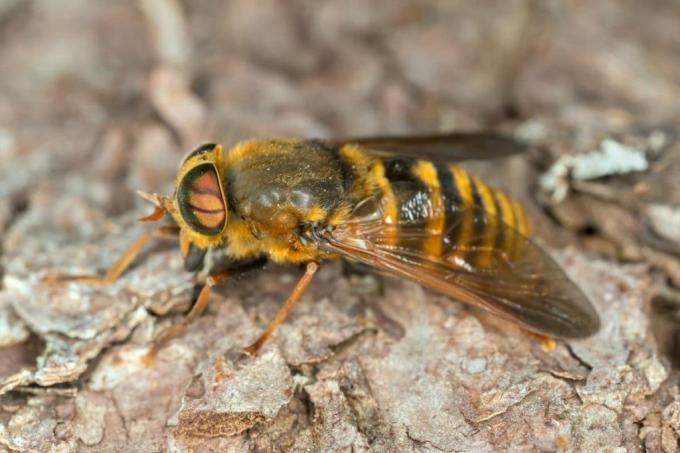
- lives in the mountain regions
- Stings from blood-sucking females are very painful
- black body with yellow hairlines on the abdomen
- transparent wings
- 13 to 16 millimeters long
- Flight time from June to August
Common blind horse (Chrysops caecutiens)
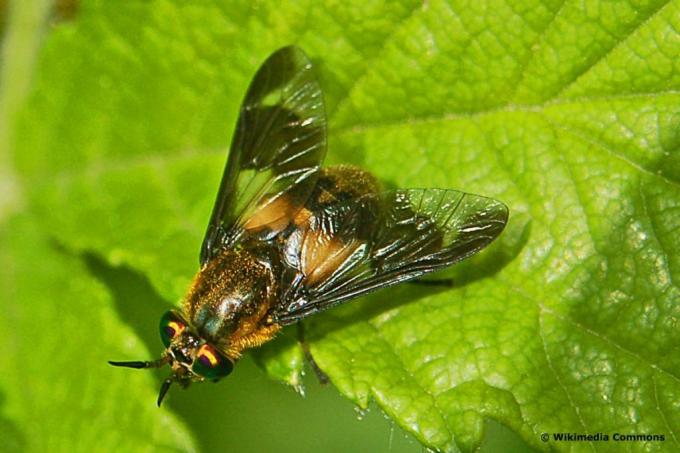
- frequent occurrence especially near water
- female blind flies suck the blood of humans and animals
- striking wing drawing
- yellow-black colored abdomen
- 10 to 14 millimeters long
- Flying time from May to September
Golden eye fly (Chrysops relictus)

- common all over Europe
- Females of the golden eye fly linger on human skin for a long time before being bitten
- noticeable black angle on the abdomen
- bright green eyes
- 9 to 13 millimeters long
- Flying time from May to September
Great gadfly (Tabanus autumnalis)

- lives on pastures and in the area of swamps, moors, wet meadows
- Females suckle the blood of grazing animals or humans
- dark body with light hair
- 16 to 22 millimeters long
- Flight time from May to August
Great gadfly (Tabanus bromius)
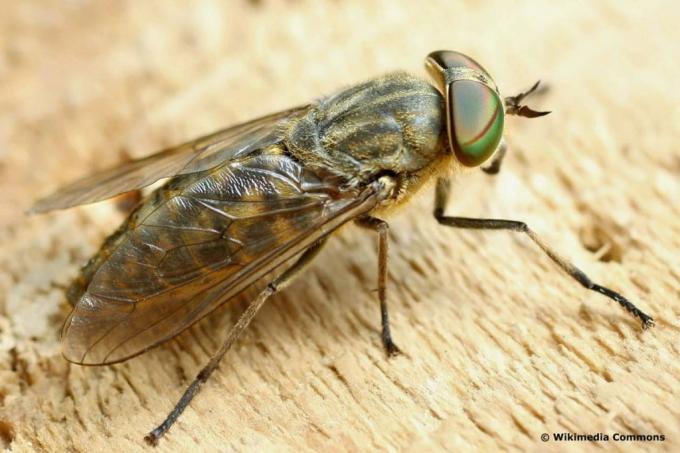
- lives near pastures
- prefers to sting cattle, horses or deer
- does not spare people either
- Horseflies often invade buildings.
- Eyes green or brown depending on the incidence of light
- 12 to 20 millimeters long
- Flying time from May to September
Rainfly (Haematopota pluvialis)

- lives in moist forest areas
- female animals prefer to stab people in the arms
- gray marbled body
- 8 to 11 millimeters long
- Flight time June to August
Louse flies (Hippoboscidae)
Around 25 different species of louse flies occur in Central Europe. The best-known species that attack humans in search of food are deer lice flies, horse flies and common swift flies. Both males and females sting the louse flies.
Common biting fly (Stomoxys calcitrans)
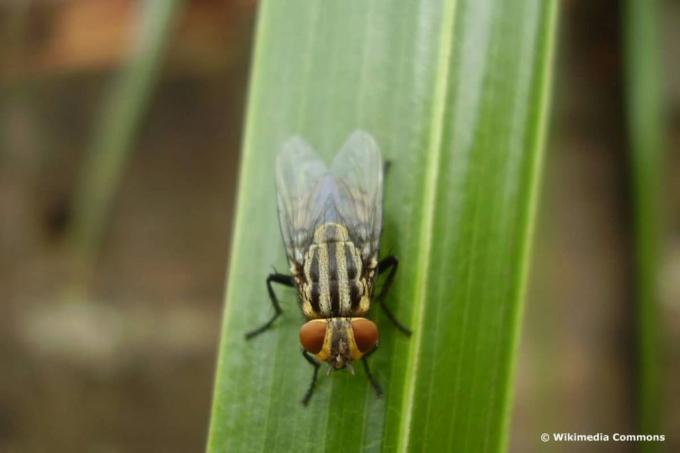
- resembles a normal housefly
- longer proboscis and widely spread wings
- lives near stables
- known as the calf bite or stinging fly
- Above all, it stabs people in the uncovered calves and drinks their blood
- Stitches are very painful
- Risk of disease transmission
- Harmful, transmission of dangerous germs possible
- light gray stripes on the back
- 5 to 7 millimeters long
- Flight time from June to October
Deer louse fly (Lipoptena cervi)
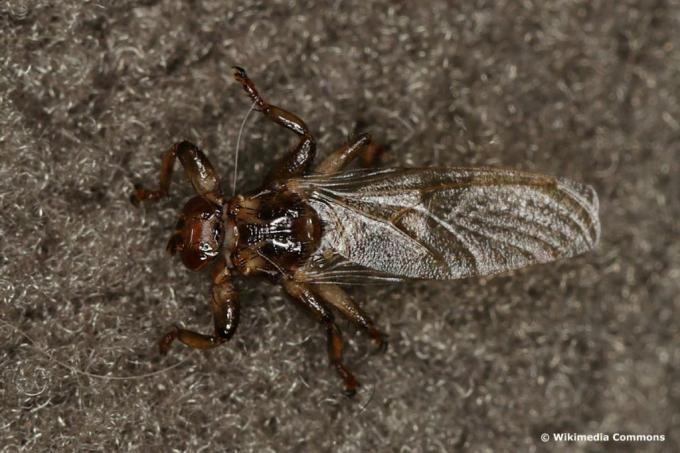
- lives in moist forest areas
- sucks the blood of grazing animals, wild animals and humans
- Fly clings to the host and breaks off its wings
- Fly species increased enormously in recent years
- mostly bites the neck
- The bite of the deer louse fly is painful
- causes severe itching
- serious inflammation possible
- Body dark
- resembles a tick with wings
- 5 to 6 millimeters long
- Flying time from May to November
Common Swift Louse Fly (Crataerina pallida)
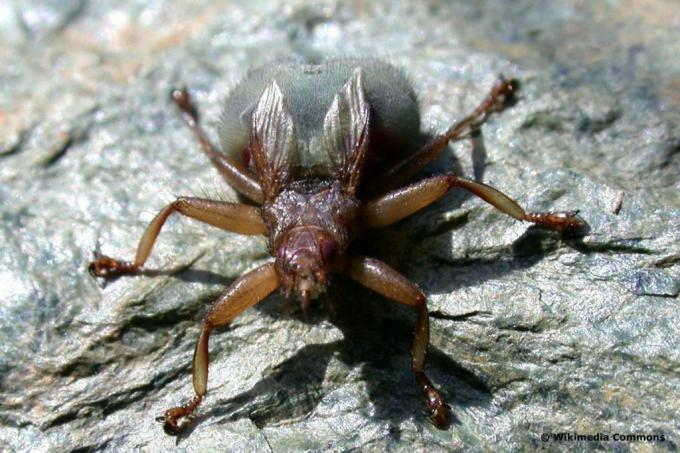
- blood-sucking parasite
- lives near swift nests
- mainly attacks swifts
- occasionally invades apartments
- in search of food it also stings people
- Sting is very painful
- Wheals form and take a week to go away.
- Body gray-brown
- 7.4 to 10 millimeters long
- Flight time from June to September
Horse fly (Hippobosca equina)
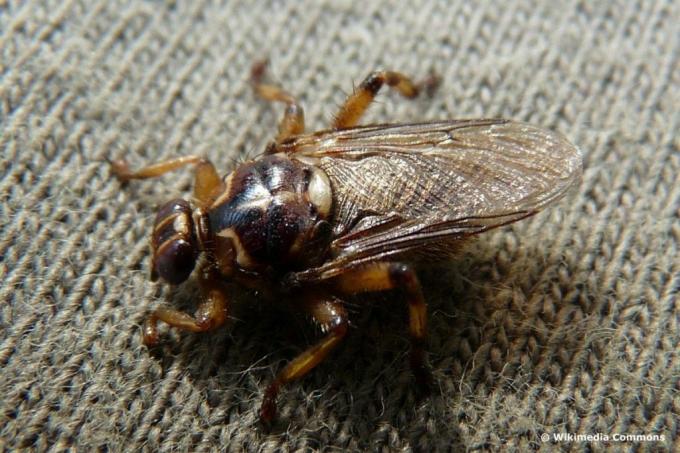
- lives near horses
- People are rarely stung by it
- does not lose its wings when clinging to its host
- can approach another horse or human at any time
- light brown body, strong claws, close-fitting wings
- 4.5 to 6 millimeters long
- Flight time from August to October
Warning: try to remove a louse fly from your skin immediately!
frequently asked Questions
Stings from biting flies, horseflies or louse flies are often very painful. Since the insects are also on grazing animals, animal excrement and carrion, a bite can lead to an infection. The bite of a deer louse fly can cause heart infections in humans. Remove the insect and destroy it. Cool the injection site. If you experience severe pain, redness, or swelling, see a doctor.
People with an allergy to bee or wasp venom also sometimes have an allergic reaction to stings from biting flies, horseflies or louse flies. If you have severe swelling, rash, chills, fever, shortness of breath or flu-like symptoms, call a doctor.
Brakes, louse flies and calf bites are attracted to the sweat of humans. Take a shower before going for a walk in the woods. In areas where there are many insects, it is preferable to wear long clothes. Protect toddlers in strollers with insect nets. Close the windows with insect screens.
Lyme borreliosis is transmitted by the Borrelia burgdorferi bacterium. It usually gets into the human body after a tick bite. The transmission of the bacterium through stinging flies cannot be ruled out. Horse flies in particular are suspected of transmitting Lyme disease. If you develop wandering redness after a sting, see a doctor immediately.

